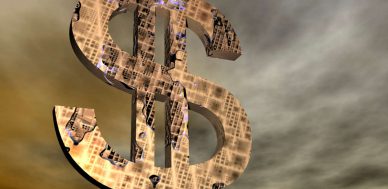U.S. Dollar Setting Up to Disappoint in 2018
Don’t be shocked if 2018 is the year when the U.S. dollar underperforms compared to other major currencies. In 2017, the greenback dropped 10.6%. In 2018, it could drop even more.
The case for a lower dollar keeps on getting stronger. If you hold the dollar, beware.
U.S. Government Wants Lower U.S. Dollar
Know this: even the U.S. government wants a lower dollar.
While speaking at the World Economic Forum in Davos, Switzerland, U.S. Secretary of the Treasury Steven Mnuchin said, “Obviously a weaker dollar is good for us as it relates to trade and opportunities.” (Source: “A weaker dollar is good for the US, Treasury Secretary Mnuchin says,” CNBC, January 24, 2018.)
Understand one thing: these sorts of comments don’t usually sit well for the currency value. For currency traders, it’s an indicator that the government will do anything and everything to bring their currency down lower.
So, it won’t be shocking to see traders selling the U.S. dollar on this news.
Central Banks Raising Rates Could Impact the U.S. Dollar
But, go beyond this…
You see, these days, central banks around the world are questioning if they should raise their interest rates.
Take the European Central Bank (ECB), for example. It continues to print money and keeps its rates below zero. But this could be very short-lived. What happens if the ECB stops printing?
Over the past few years, there was a lot of capital inflow to the United States. You could borrow money in the eurozone at dirt-cheap rates and, if you just bought U.S. bonds, your returns were decent.
Now, as the ECB moves away from a low-interest-rate policy and stops printing money, it’s not an out-of-this-world idea to see the money that came into the U.S. leave.
Assume you are a fund manager in the eurozone and you borrowed a lot of money to invest in U.S. bonds. You know that the rates you borrowed your funds at will increase. What are you going to do?
Its no rocket science; you close your trade and return the money. This means, sell the bonds, sell the dollars, and buy euros.
This is something that could happen this year: investors closing their U.S. dollar-denominated trades and buying the currency where they borrowed money from. As a result, there could be an influx of the dollar in the market (too much supply), and this could have severe impacts on the U.S. dollar value.
Keep in mind, it’s not just the ECB that could be raising interest rates. We know that the Bank of Canada has been raising rates. The Bank of England has also raised rates once and could raise them again. Even the Bank of Japan is hinting that it wants higher rates.
U.S. Dollar Outlook: Why the Worst Is Yet To Come
Dear reader, this is all just starting right now. The worst could be ahead.
Just from a technical analysis perspective, the U.S. dollar index is breaking below the key support level, around 90.00. The next support isn’t until the 77.00–80.00 level. But it’s still very questionable whether those levels will sustain. There’s a lot of selling pressure on the dollar.
Don’t be shocked to see the dollar index drop to as low at 72.00; that’s roughly 20% lower from where it currently sits.
Here’s one more thing that I believe not many are asking: If the U.S. dollar is in a free fall, what will the Federal Reserve do? Will it raise rates quicker than originally anticipated? Obviously, with time, we will know more.
